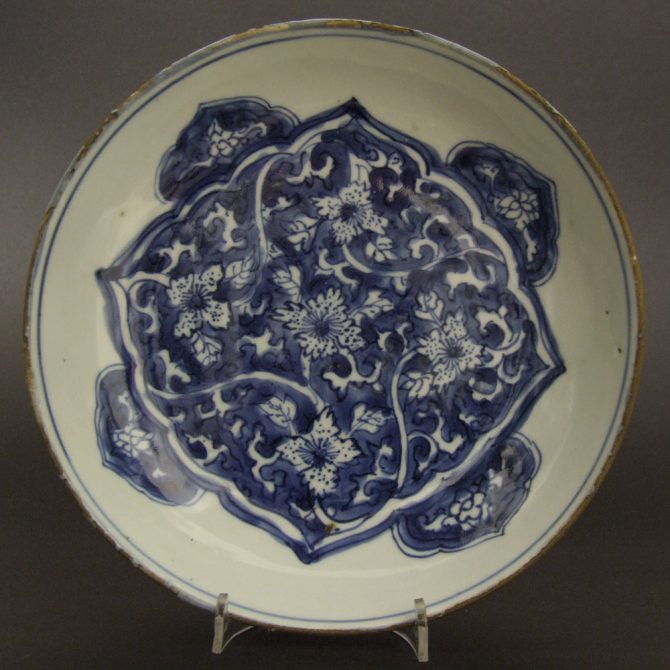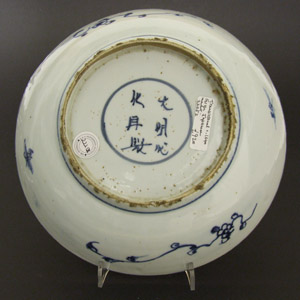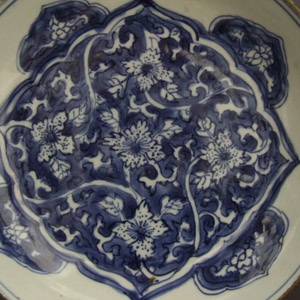
CHONGZHEN 1628 – 1644 Transitional Porcelain
A Transitional Blue and White Porcelain Serving Dish, Late Ming Dynasty 1628-1644. This Ming Porcelain Dish was Made for the Japanese Market, it is Thickly Potted and Decorated in a Deep Blue. The Design is of Scrolling Flowers in White Against a Blue Ground.
SOLD
- Condition
- Very good, the rim with extensive Mushikui (insect-nibbled) fritting.
- Size
- Diameter : 21.2 cm (8 1/4 inches).
- Provenance
- N/A
- Stock number
- 22252
Information
Ko-Sometsuke :
Ko-Sometsuke, meaning `Old Blue and White` is a term used to describe Chinese blue and white porcelain made for Japan. This late Ming porcelain was made from the Wanli period (1573-1620) and ended in the Chongzhen period (1628-1644), the main period of production being the 1620`2 and 1630`s. The porcelain objects produced were made especially for the Japanese market, both the shapes and the designs were tailored to Japanese taste, the production process too allowed for Japanese aesthetics to be included in the finished object. Its seams firing faults were added, repaired tears in the leather-hard body were too frequent to not, in some cases, be deliberate. These imperfections as well as the fritting Mushikui (insect-nibbled) rims and kiln grit on the footrims all added to the Japanese aesthetic. The shapes created were often expressly made for the Japanese tea ceremony meal, the Kaiseki, small dishes for serving food at the tea ceremony are the most commonly encountered form. Designs, presumably taken from Japanese drawings sent to China, are very varied, often using large amount of the white porcelain contrasting well with the asymmetry of the design.

